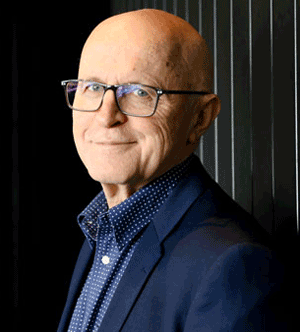* Originally published on Canstar.com.au
The Reserve Bank of Australia (RBA) increased the cash rate for the second month in a row and experts predict there are more hikes to come. This has caused speculation about what it may mean for Australian property prices. We take a look at what history tells us.
It has become a generally accepted notion that a rise in interest rates will cause major falls in property prices across the nation.
Many economists are tipping a 15% annual decline in Australian property prices because interest rates are expected to keep rising.
The small decline in Sydney prices recorded to date by some data companies is seen by some as evidence that rising interest rates mean falling house prices.
But Hotspotting research shows that the decline in the Sydney market pre-dated the first official interest rate hike on 3 May with a dramatic decrease in sales activity in the March quarter – well ahead of the RBA’s move.
Elsewhere, the latest price data published by SQM Research and CoreLogic in early June showed house prices are still rising – and in some cases at high growth rates – in most cities and regional markets across Australia.
Rising rates and Australian property prices
There is, as yet, no evidence of any nationwide impact on sales activity or prices from the increase in the official interest rate. Nor would we expect there to be. Here’s why. Interest rate levels are not the sole factor in determining whether property prices rise or fall. Previous nationwide property booms in Australia have happened during times of very high and rising interest rates.
The last time Australia had a phase of rising interest rates was from 2002 to 2008. In that time, the RBA increased the cash rate a total of 12 times.
In early 2002 borrowers were typically paying about 6% on their mortgages but by late 2006 that had risen to 8%. Borrowers were paying more than 9% by early 2008. And during that period of high and rising interest rates, property prices more than doubled in many markets across Australia, according to leading research analyst Simon Pressley of Propertyology.
Mr Pressley said that house prices rose more than 100% in six of the eight capital cities and in dozens of major regional centres across Australia. In some locations, he noted, the growth was between 150% and 200%. And I know he’s right because I was researching and writing about real estate markets at the time.
Mr Pressley’s analysis is broadly supported by ANZ Bank. “Interest rate hikes do not always lower prices. House prices rose by more than 50% during the tightening cycle of 2002-2008 – or an average of 8% per year,” stated a report issued by the bank in April.
There was a similar scenario during the 1980s when Australia experienced an extraordinary residential property boom in a climate where mortgage rates were above 10% and rose repeatedly to reach 17% in 1989, according to RBA data.
“Interest rate rises were extremely common throughout the 1970s and 1980s. Fast-rising interest rates did not stop the median house price ballooning in every location across Australia. The cost of the standard house in Sydney increased eightfold from $18,000 in 1970 to $147,000 in 1990. In Hobart, the average house price rose from $11,000 to $83,000,” explained Mr Pressley.
(Yes, that’s how much you paid for Sydney houses three decades ago.)
The lesson from history is that periods of high and rising interest rates tend to deliver property booms with rapidly rising prices.
 Will rising rates cause mortgage stress?
Will rising rates cause mortgage stress?
Another topic of speculation is whether higher rates will result in high levels of mortgage stress.
Despite recent increases, we still have ultra-low mortgage rates in Australia. We’ve been told to expect more rate rises but views differ about how high rates will go.
Most major lenders have issued statements confirming that the vast majority of their customers will be comfortable with higher rates because they are well ahead on their repayments and have built up savings during the period of COVID-19 restrictions.
ANZ and Westpac both say about 70% of their customers are well ahead on their repayments and Bankwest says 90% of their customers are ahead.
This is because most borrowers didn’t ask to lower their repayments when interest rates were falling. Instead, they kept making repayments much higher than they needed to. This means that, despite the recent increases in mortgage rates, they could potentially still ask their bank to lower their monthly repayment levels as they have built a ‘buffer’. In addition, many borrowers have made extra payments off their loans.
The other buffer in the system is the requirement by APRA that lenders assess their borrowers on their ability to repay loans at much higher interest rates. In November 2021 this buffer increased from 2.5% to 3%. This means most borrowers should still be able to comfortably service their mortgages if lenders have correctly assessed them and they haven’t taken on any new personal debt.
So will rising interest rates cause massive levels of mortgage stress? In my view, absolutely not.
 Will rising rates cause mortgage stress?
Will rising rates cause mortgage stress?



